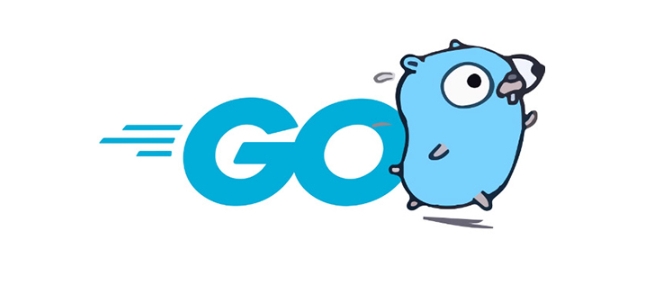How to make an HTTP POST request with JSON body in Go?
Jul 31, 2025 am 10:28 AMTo make an HTTP POST request with a JSON body in Go, use the net/http package. 1. Prepare the JSON payload using either a struct or map. 2. Marshal the data into JSON format. 3. Use http.Post for simple cases or http.NewRequest with http.Client for more control over headers. 4. Set required headers like Content-Type to application/json and optionally Authorization. 5. Send the request and handle the response by checking errors, reading the body, and inspecting the status code. 6. Always close the response body with defer resp.Body.Close() to avoid leaks. 7. Reuse http.Client for multiple requests for better performance.

To make an HTTP POST request with a JSON body in Go, you'll typically use the net/http package, which is part of the standard library. The process involves creating the JSON payload, setting the appropriate headers, and sending the request.

Here's a quick example to set the context:
package main
import (
"bytes"
"encoding/json"
"fmt"
"net/http"
)
func main() {
// Define the request body as a map
requestBody := map[string]string{
"username": "testuser",
"password": "123456",
}
// Marshal the map into a JSON byte slice
jsonData, _ := json.Marshal(requestBody)
// Create a new POST request
resp, err := http.Post("https://example.com/api/login", "application/json", bytes.NewBuffer(jsonData))
if err != nil {
fmt.Println("Error making request:", err)
return
}
defer resp.Body.Close()
fmt.Println("Response status:", resp.Status)
}Now, let’s break down the key parts of this process in more detail.

Creating the JSON Payload
Before making the request, you need to prepare the data you want to send. In Go, it’s common to use a map[string]interface{} or a struct to represent the JSON body.
For example:

type User struct {
Username string `json:"username"`
Password string `json:"password"`
}
user := User{
Username: "testuser",
Password: "123456",
}
jsonData, err := json.Marshal(user)- Using a struct gives you more control over field names and types.
- If you're just prototyping or sending simple data, a map is often easier.
Setting Up the POST Request
Once you have the JSON data, you can create the request. The http.Post function is a convenient way if you don't need to customize the request headers beyond content type.
But if you need more control (like adding headers such as Authorization), you can use http.NewRequest and http.Client:
req, err := http.NewRequest("POST", "https://example.com/api/login", bytes.NewBuffer(jsonData))
if err != nil {
// handle error
}
req.Header.Set("Content-Type", "application/json")
req.Header.Set("Authorization", "Bearer your_token_here")
client := &http.Client{}
resp, err := client.Do(req)This gives you more flexibility:
- Add custom headers
- Set timeouts
- Handle redirects
Handling the Response
After sending the request, always check the response and handle it properly:
- Check for errors from
client.Do() - Use
defer resp.Body.Close()to avoid resource leaks - Read and inspect the response body if needed
Example:
body, err := io.ReadAll(resp.Body)
if err != nil {
fmt.Println("Error reading response body:", err)
return
}
fmt.Println("Response Body:", string(body))Also, make sure to check the status code:
if resp.StatusCode != http.StatusOK {
fmt.Println("Unexpected status code:", resp.StatusCode)
}Common Gotchas and Tips
-
Don’t forget to set
Content-Type: application/json, or the server might not interpret the body correctly. -
Always close the response body using
defer resp.Body.Close()to avoid memory leaks. - If you're making multiple requests, reuse the
http.Client— it handles connection pooling automatically. - For more complex use cases (like retries or middleware), consider using a library like
restyor building a wrapper.
That’s the core of making a POST request with a JSON body in Go. It’s straightforward once you get the structure right, but there are a few small details that can trip you up if you're not careful.
The above is the detailed content of How to make an HTTP POST request with JSON body in Go?. For more information, please follow other related articles on the PHP Chinese website!

Hot AI Tools

Undress AI Tool
Undress images for free

Undresser.AI Undress
AI-powered app for creating realistic nude photos

AI Clothes Remover
Online AI tool for removing clothes from photos.

Clothoff.io
AI clothes remover

Video Face Swap
Swap faces in any video effortlessly with our completely free AI face swap tool!

Hot Article

Hot Tools

Notepad++7.3.1
Easy-to-use and free code editor

SublimeText3 Chinese version
Chinese version, very easy to use

Zend Studio 13.0.1
Powerful PHP integrated development environment

Dreamweaver CS6
Visual web development tools

SublimeText3 Mac version
God-level code editing software (SublimeText3)

Hot Topics
 Strategies for Integrating Golang Services with Existing Python Infrastructure
Jul 02, 2025 pm 04:39 PM
Strategies for Integrating Golang Services with Existing Python Infrastructure
Jul 02, 2025 pm 04:39 PM
TointegrateGolangserviceswithexistingPythoninfrastructure,useRESTAPIsorgRPCforinter-servicecommunication,allowingGoandPythonappstointeractseamlesslythroughstandardizedprotocols.1.UseRESTAPIs(viaframeworkslikeGininGoandFlaskinPython)orgRPC(withProtoco
 Understanding the Performance Differences Between Golang and Python for Web APIs
Jul 03, 2025 am 02:40 AM
Understanding the Performance Differences Between Golang and Python for Web APIs
Jul 03, 2025 am 02:40 AM
Golangofferssuperiorperformance,nativeconcurrencyviagoroutines,andefficientresourceusage,makingitidealforhigh-traffic,low-latencyAPIs;2.Python,whileslowerduetointerpretationandtheGIL,provideseasierdevelopment,arichecosystem,andisbettersuitedforI/O-bo
 Is golang frontend or backend
Jul 08, 2025 am 01:44 AM
Is golang frontend or backend
Jul 08, 2025 am 01:44 AM
Golang is mainly used for back-end development, but it can also play an indirect role in the front-end field. Its design goals focus on high-performance, concurrent processing and system-level programming, and are suitable for building back-end applications such as API servers, microservices, distributed systems, database operations and CLI tools. Although Golang is not the mainstream language for web front-end, it can be compiled into JavaScript through GopherJS, run on WebAssembly through TinyGo, or generate HTML pages with a template engine to participate in front-end development. However, modern front-end development still needs to rely on JavaScript/TypeScript and its ecosystem. Therefore, Golang is more suitable for the technology stack selection with high-performance backend as the core.
 How to install Go
Jul 09, 2025 am 02:37 AM
How to install Go
Jul 09, 2025 am 02:37 AM
The key to installing Go is to select the correct version, configure environment variables, and verify the installation. 1. Go to the official website to download the installation package of the corresponding system. Windows uses .msi files, macOS uses .pkg files, Linux uses .tar.gz files and unzip them to /usr/local directory; 2. Configure environment variables, edit ~/.bashrc or ~/.zshrc in Linux/macOS to add PATH and GOPATH, and Windows set PATH to Go in the system properties; 3. Use the government command to verify the installation, and run the test program hello.go to confirm that the compilation and execution are normal. PATH settings and loops throughout the process
 Resource Consumption (CPU/Memory) Benchmarks for Typical Golang vs Python Web Services
Jul 03, 2025 am 02:38 AM
Resource Consumption (CPU/Memory) Benchmarks for Typical Golang vs Python Web Services
Jul 03, 2025 am 02:38 AM
Golang usually consumes less CPU and memory than Python when building web services. 1. Golang's goroutine model is efficient in scheduling, has strong concurrent request processing capabilities, and has lower CPU usage; 2. Go is compiled into native code, does not rely on virtual machines during runtime, and has smaller memory usage; 3. Python has greater CPU and memory overhead in concurrent scenarios due to GIL and interpretation execution mechanism; 4. Although Python has high development efficiency and rich ecosystem, it consumes a high resource, which is suitable for scenarios with low concurrency requirements.
 How to build a GraphQL API in golang
Jul 08, 2025 am 01:03 AM
How to build a GraphQL API in golang
Jul 08, 2025 am 01:03 AM
To build a GraphQLAPI in Go, it is recommended to use the gqlgen library to improve development efficiency. 1. First select the appropriate library, such as gqlgen, which supports automatic code generation based on schema; 2. Then define GraphQLschema, describe the API structure and query portal, such as defining Post types and query methods; 3. Then initialize the project and generate basic code to implement business logic in resolver; 4. Finally, connect GraphQLhandler to HTTPserver and test the API through the built-in Playground. Notes include field naming specifications, error handling, performance optimization and security settings to ensure project maintenance
 Choosing a Microservice Framework: KitEx/GoMicro vs Python Flask/FastAPI Approaches
Jul 02, 2025 pm 03:33 PM
Choosing a Microservice Framework: KitEx/GoMicro vs Python Flask/FastAPI Approaches
Jul 02, 2025 pm 03:33 PM
The choice of microservice framework should be determined based on project requirements, team technology stack and performance expectations. 1. Given the high performance requirements, KitEx or GoMicro of Go is given priority, especially KitEx is suitable for complex service governance and large-scale systems; 2. FastAPI or Flask of Python is more flexible in rapid development and iteration scenarios, suitable for small teams and MVP projects; 3. The team's skill stack directly affects the selection cost, and if there is already Go accumulation, it will continue to be more efficient. The Python team's rash conversion to Go may affect efficiency; 4. The Go framework is more mature in the service governance ecosystem, suitable for medium and large systems that need to connect with advanced functions in the future; 5. A hybrid architecture can be adopted according to the module, without having to stick to a single language or framework.
 Go sync.WaitGroup example
Jul 09, 2025 am 01:48 AM
Go sync.WaitGroup example
Jul 09, 2025 am 01:48 AM
sync.WaitGroup is used to wait for a group of goroutines to complete the task. Its core is to work together through three methods: Add, Done, and Wait. 1.Add(n) Set the number of goroutines to wait; 2.Done() is called at the end of each goroutine, and the count is reduced by one; 3.Wait() blocks the main coroutine until all tasks are completed. When using it, please note: Add should be called outside the goroutine, avoid duplicate Wait, and be sure to ensure that Don is called. It is recommended to use it with defer. It is common in concurrent crawling of web pages, batch data processing and other scenarios, and can effectively control the concurrency process.






